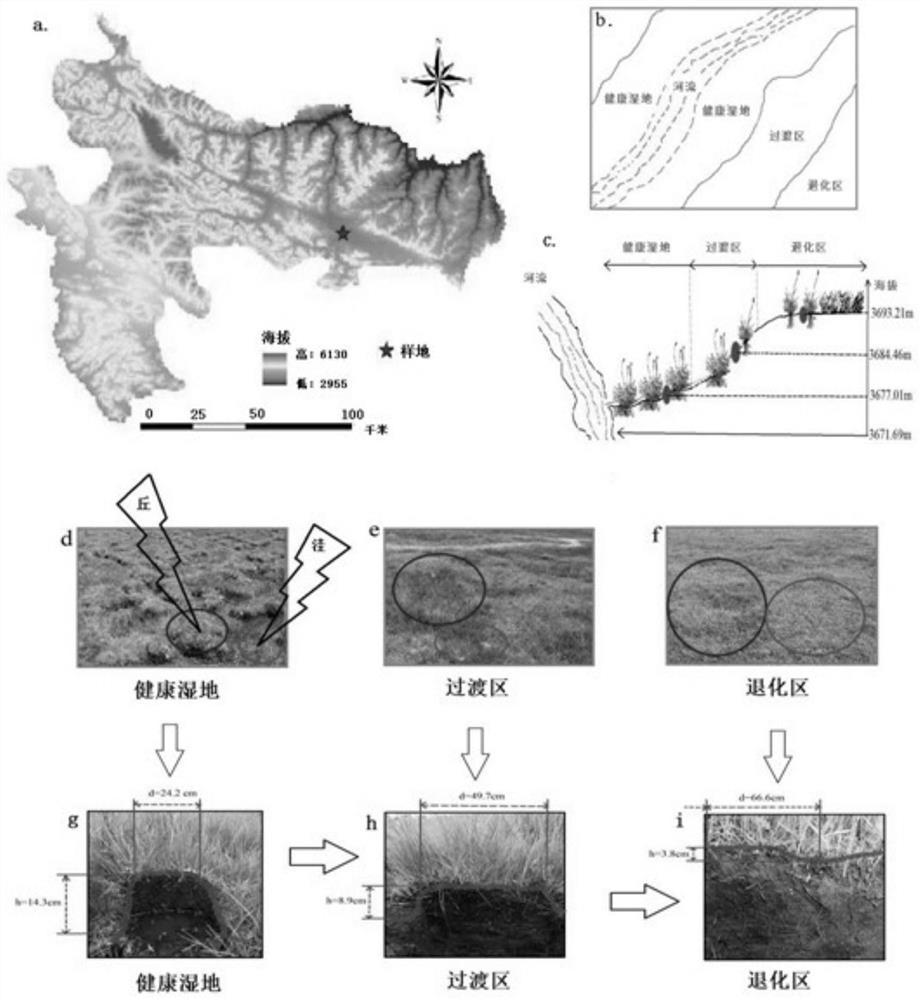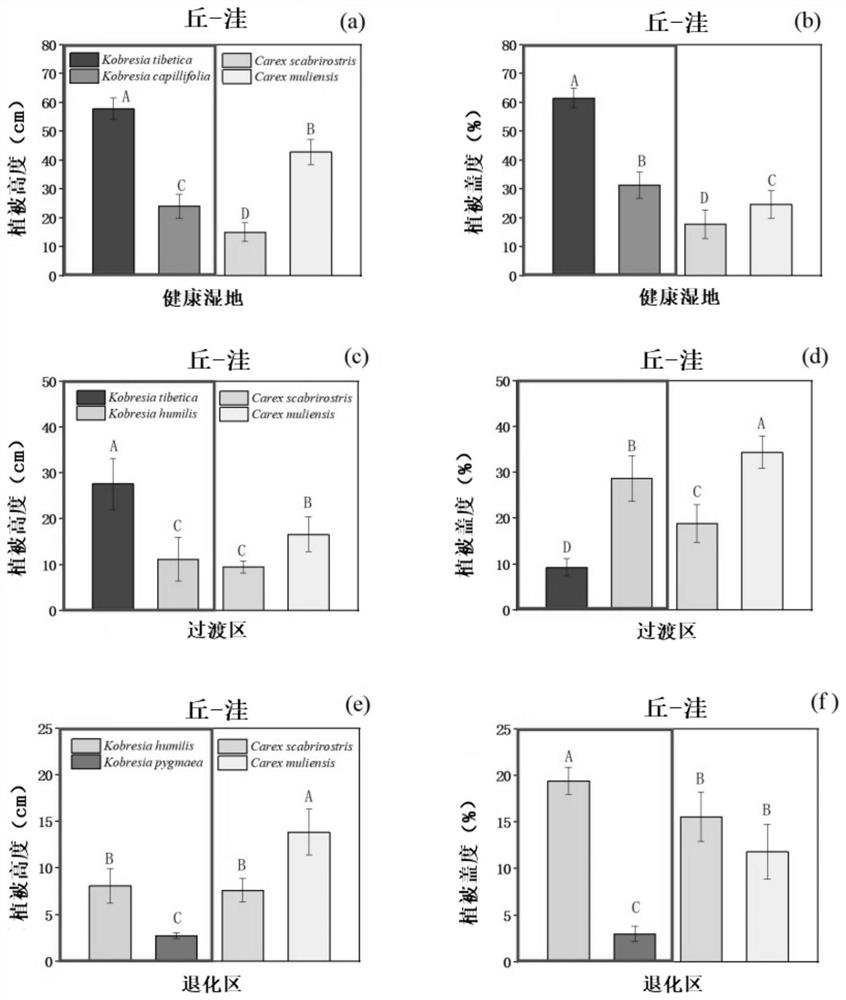Research method for succession process mechanism of three-river-source alpine marsh wetland
A wetland and alpine technology, applied in the field of environmental engineering, can solve the problem that wetlands cannot be restored naturally
- Summary
- Abstract
- Description
- Claims
- Application Information
AI Technical Summary
Problems solved by technology
Method used
Image
Examples
Embodiment Construction
[0023] The technical solution of the present invention will be described in further detail below in conjunction with the accompanying drawings and specific embodiments.
[0024] Research methods:
[0025] Four indicator plants were selected in this study: Kobresia tibetica, Kobresia pygmaea, Carex scabrirostris and Carexmuliensis. Kobresia tibetan is a planting species of mounds, while Kobresia alpina is a typical indicator species of alpine meadow, and the transitional degradation status of alpine wetland to alpine meadow is usually evaluated according to the existence or disappearance of the above species. Carex sylvestris and Carex muli are typical indicator species in alpine marsh depressions, and they have considerable biomass in low-oxygen environments. Therefore, their productivity in depressions can be used to evaluate the surface water conditions in depressions.
[0026] D:
[0027] The research site is located in the south of Dawu Town, Maqin County, Guoluo Prefect...
PUM
 Login to view more
Login to view more Abstract
Description
Claims
Application Information
 Login to view more
Login to view more - R&D Engineer
- R&D Manager
- IP Professional
- Industry Leading Data Capabilities
- Powerful AI technology
- Patent DNA Extraction
Browse by: Latest US Patents, China's latest patents, Technical Efficacy Thesaurus, Application Domain, Technology Topic.
© 2024 PatSnap. All rights reserved.Legal|Privacy policy|Modern Slavery Act Transparency Statement|Sitemap



